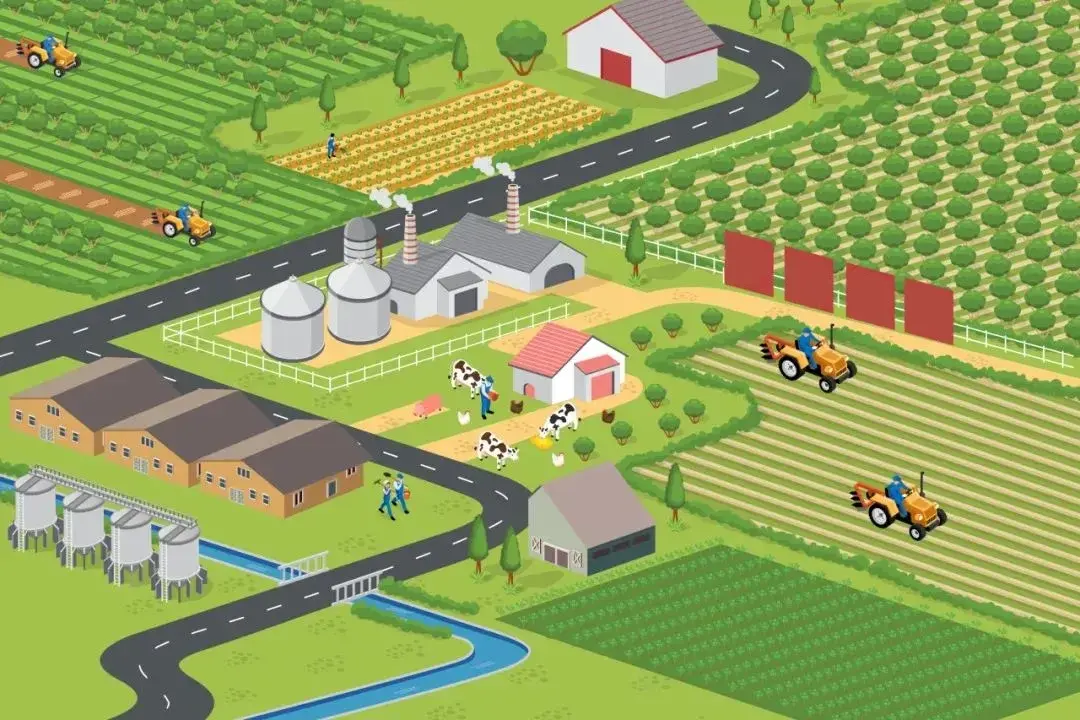Agricultural sensors are pivotal instruments utilized for measuring various parameters in farming environments. From monitoring soil conditions to tracking livestock, these sensors play a crucial role in optimizing agricultural processes and enhancing productivity. However, choosing the right agricultural sensor involves considering several factors to ensure optimal performance and reliability.
Agricultural sensors are pivotal instruments utilized for measuring various parameters in farming environments. From monitoring soil conditions to tracking livestock, these sensors play a crucial role in optimizing agricultural processes and enhancing productivity. However, choosing the right agricultural sensor involves considering several factors to ensure optimal performance and reliability.

Opt for Low-Power Sensors
Given that agricultural sensors are often deployed in remote field locations where power supply can be limited, selecting low-power or solar-powered sensors is advisable. Ideally, opt for sensors with analog signal output ranging from 0-2.5V. Additionally, prioritize sensors with low power consumption even during idle or sleep modes to maximize energy efficiency.
Ensure IP65 Protection Rating
Agricultural sensors are subjected to harsh outdoor conditions, necessitating robust protection against dust and water ingress. Aim for sensors with an IP65 protection rating or higher to withstand exposure to the elements effectively. Avoid sensors with exposed sensing elements or openings, as these can lead to debris accumulation and compromise sensor performance.
Simplify Installation
Simplicity in sensor installation is paramount, especially in agricultural settings where users may have limited technical expertise. Choose sensors with straightforward wiring and mounting procedures to facilitate easy installation and troubleshooting. This approach helps minimize maintenance costs and ensures farmers can quickly address any issues that may arise.
Opt for Corrosion-Resistant Materials
Agricultural environments are prone to corrosion due to prolonged exposure to moisture and various chemicals. Opt for sensors constructed from corrosion-resistant materials such as stainless steel for durability and longevity. Additionally, ensure sensors are compatible with the specific environmental conditions they will encounter, such as high salinity in aquaculture applications.
Consider Short Calibration Cycles
To minimize maintenance costs and ensure accurate measurements, opt for sensors with short calibration cycles or those that require no calibration. While precision is important, stability and repeatability are equally crucial for reliable sensor performance in agricultural applications. Choose sensors with low drift and excellent long-term stability to minimize the need for frequent recalibration.
Prioritize Cold Resistance
Given the outdoor nature of agricultural operations, sensors must withstand extreme temperatures, including sub-zero conditions. Ensure sensors are rated for operation in temperatures as low as -30°C to ensure reliable performance year-round. Additionally, avoid sensors with components that are susceptible to temperature-related damage, such as LED or LCD displays.
In addition to these considerations, it's essential to prioritize sensor stability and reliability. Choose sensors with low drift and long-term stability, ideally with no calibration requirements or infrequent calibration intervals, to minimize maintenance efforts and costs. With the continuous advancement of smart agriculture technologies, the role and importance of sensors in optimizing farming practices continue to grow. By harnessing sensor data, farmers and ranchers can gain valuable insights to enhance efficiency and productivity across vast agricultural landscapes.
Agricultural sensors are pivotal instruments utilized for measuring various parameters in farming environments. From monitoring soil conditions to tracking livestock, these sensors play a crucial role in optimizing agricultural processes and enhancing productivity. However, choosing the right agricultural sensor involves considering several factors to ensure optimal performance and reliability.

Opt for Low-Power Sensors
Given that agricultural sensors are often deployed in remote field locations where power supply can be limited, selecting low-power or solar-powered sensors is advisable. Ideally, opt for sensors with analog signal output ranging from 0-2.5V. Additionally, prioritize sensors with low power consumption even during idle or sleep modes to maximize energy efficiency.
Ensure IP65 Protection Rating
Agricultural sensors are subjected to harsh outdoor conditions, necessitating robust protection against dust and water ingress. Aim for sensors with an IP65 protection rating or higher to withstand exposure to the elements effectively. Avoid sensors with exposed sensing elements or openings, as these can lead to debris accumulation and compromise sensor performance.
Simplify Installation
Simplicity in sensor installation is paramount, especially in agricultural settings where users may have limited technical expertise. Choose sensors with straightforward wiring and mounting procedures to facilitate easy installation and troubleshooting. This approach helps minimize maintenance costs and ensures farmers can quickly address any issues that may arise.
Opt for Corrosion-Resistant Materials
Agricultural environments are prone to corrosion due to prolonged exposure to moisture and various chemicals. Opt for sensors constructed from corrosion-resistant materials such as stainless steel for durability and longevity. Additionally, ensure sensors are compatible with the specific environmental conditions they will encounter, such as high salinity in aquaculture applications.
Consider Short Calibration Cycles
To minimize maintenance costs and ensure accurate measurements, opt for sensors with short calibration cycles or those that require no calibration. While precision is important, stability and repeatability are equally crucial for reliable sensor performance in agricultural applications. Choose sensors with low drift and excellent long-term stability to minimize the need for frequent recalibration.
Prioritize Cold Resistance
Given the outdoor nature of agricultural operations, sensors must withstand extreme temperatures, including sub-zero conditions. Ensure sensors are rated for operation in temperatures as low as -30°C to ensure reliable performance year-round. Additionally, avoid sensors with components that are susceptible to temperature-related damage, such as LED or LCD displays.
In addition to these considerations, it's essential to prioritize sensor stability and reliability. Choose sensors with low drift and long-term stability, ideally with no calibration requirements or infrequent calibration intervals, to minimize maintenance efforts and costs. With the continuous advancement of smart agriculture technologies, the role and importance of sensors in optimizing farming practices continue to grow. By harnessing sensor data, farmers and ranchers can gain valuable insights to enhance efficiency and productivity across vast agricultural landscapes.
Previous: Overview of Humidity Sensors
Next: The Role of Humidity Sensors in Diverse Environments





